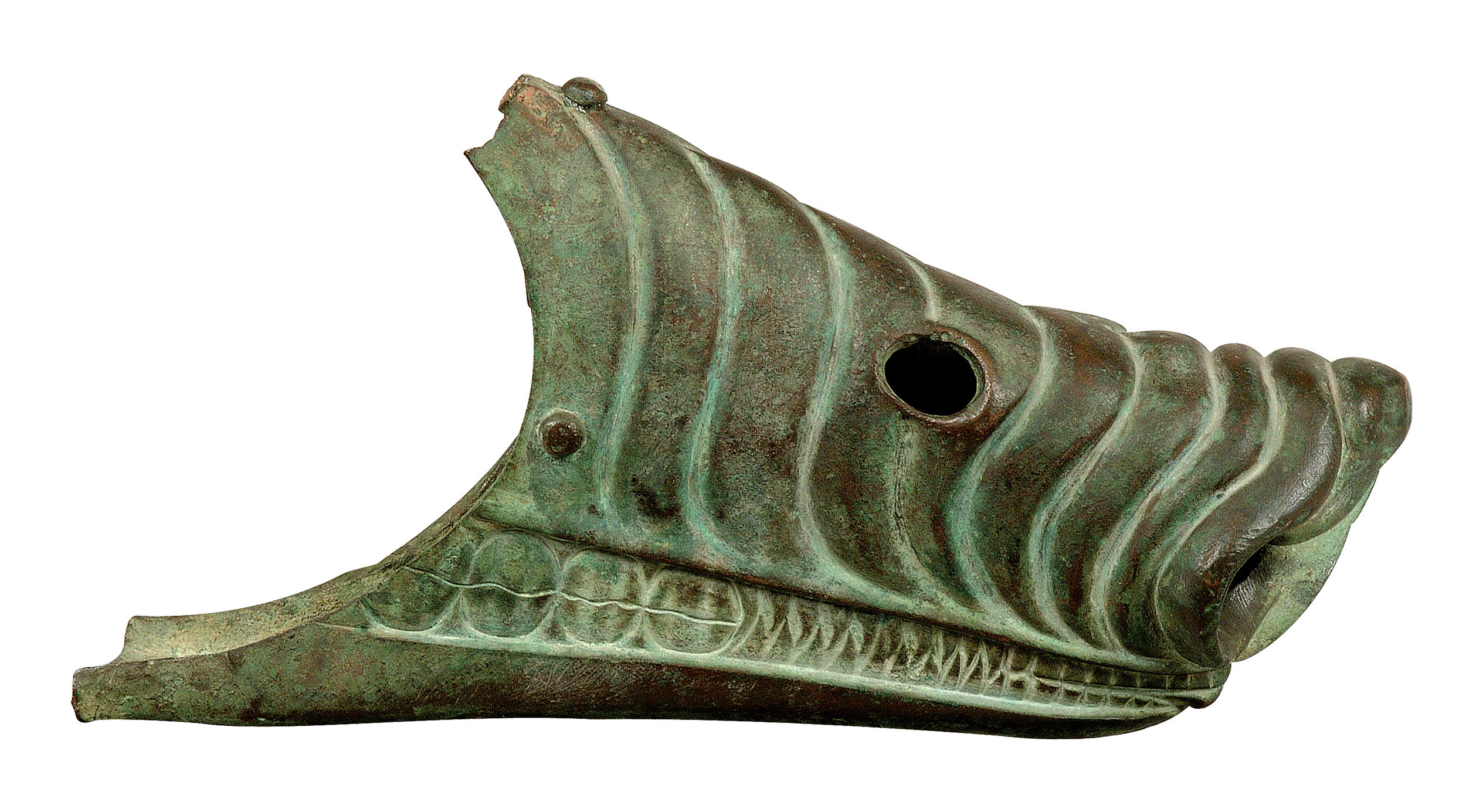

Ram of a ship
Αncient warships had a projecting ram, which allowed them to attack and destroy enemy vessels. The illustrated object is the bronze casing of such a ram. It was fixed on the wooden part with nails, two of which are still preserved. The casing is shaped like the snout of a sea monster, with folded skin, serrated dentition, and holes for the eyes and nostrils. The monster has been interpreted variously as a shark, a crocodile or even a boar, but it is more likely that it represents an imaginary creature, which accompanied marine deities and combined elements from sea and land animals
A ram of that type is depicted on a late 6th c. BC black-figure kylix at the British Museum, depicting a warship attacking a merchant vessel.
The Canellopoulos Museum ram is rather small and light, and is unlikelz to have been used in a real warship. Most probably it belonged to a smaller votive vessel, which was dedicated to a sanctuary – a practice which is attested in Hellenistic times. This element, combined with the realistic rendering of the monster, suggest a Hellenistic date for the object.
PUBLICATION
– Kalligas P. 1996. «Χάλκινο έμβολο πλοίου», in Tzalas Chr. (ed.), Tropis IV. 4th International Symposium on Ship Construction in Antiquity, Athens, 129-141.
– Kalligas P. 2006. Cat. no. 138, in Choremi-Spetsieri Α. – Zarkadas Α. (eds), The Paul and Alexandra Canellopoulos Museum. Ancient Art, Athens, 222-223.
– Zarkadas A. 2017. ‘Bronze parts of ships from the Paul and Alexandra Canellopoulos Museum’, in Frielinghaus H., Schmidts T., Tsamakda V. (επιμ.) Schiffe und Ihr Kontext. Darstellunf, Modelle, Bestandteile – von der Bronzezeit bis zum Ende des Byzantinischen Reiches, Mainz, 79-89, esp. 79-80.
